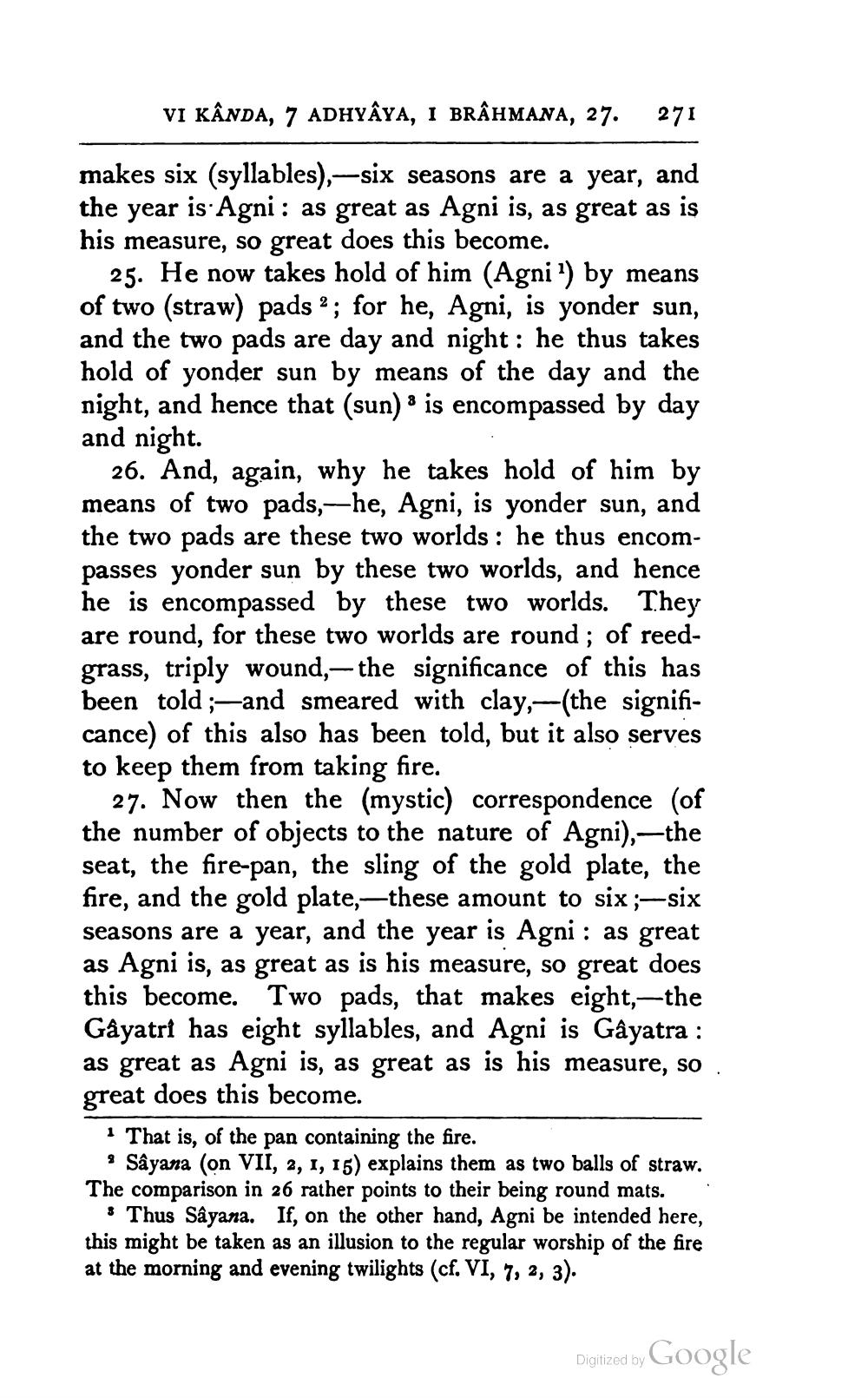________________
VI KÂNDA, 7 ADHYAYA, I BRÂHMANA, 27.
271
makes six (syllables),--six seasons are a year, and the year is Agni : as great as Agni is, as great as is his measure, so great does this become.
25. He now takes hold of him (Agni?) by means of two (straw) pads 2; for he, Agni, is yonder sun, and the two pads are day and night: he thus takes hold of yonder sun by means of the day and the night, and hence that (sun) * is encompassed by day and night.
26. And, again, why he takes hold of him by means of two pads,-he, Agni, is yonder sun, and the two pads are these two worlds : he thus encompasses yonder sun by these two worlds, and hence he is encompassed by these two worlds. They are round, for these two worlds are round; of reedgrass, triply wound,- the significance of this has been told ;—and smeared with clay,—(the significance) of this also has been told, but it also serves to keep them from taking fire.
27. Now then the (mystic) correspondence (of the number of objects to the nature of Agni),—the seat, the fire-pan, the sling of the gold plate, the fire, and the gold plate,—these amount to six ;—six seasons are a year, and the year is Agni : as great as Agni is, as great as is his measure, so great does this become. Two pads, that makes eight, the Gayatri has eight syllables, and Agni is Gayatra : as great as Agni is, as great as is his measure, so great does this become. · That is, of the pan containing the fire.
Sâyana (on VII, 2, 1, 15) explains them as two balls of straw. The comparison in 26 rather points to their being round mats.
* Thus Sâyana. If, on the other hand, Agni be intended here, this might be taken as an illusion to the regular worship of the fire at the morning and evening twilights (cf. VI, 7, 2, 3).
Digitized by Google




